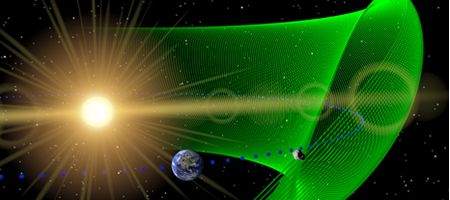It’s two and a half thousand years since the Greek philosopher Philolaus suggested the existence of a ‘counter-Earth’ – another planet sharing Earth’s orbit.

It’s since been established, of course, that no such planet exists. But NASA’s Wide-field Infrared Survey Explorer (WISE) mission has now discovered that we do in fact share our orbit with another body, a so-called Trojan asteroid.
Trojans are asteroids that occupy stable points in front of or behind their planet and in the same orbit. Neptune, Mars and Jupiter have them, and scientists had predicted Earth should too. However, they’ve been difficult to find because they are relatively small and appear near the sun from Earth’s point of view.
“These asteroids dwell mostly in the daylight, making them very hard to see,” says Martin Connors of Athabasca University in Canada.
“But we finally found one, because the object has an unusual orbit that takes it farther away from the sun than what is typical for Trojans. WISE was a game-changer, giving us a point of view difficult to have at Earth’s surface.”
2010 TK7 is roughly 1,000 feet in diameter, and about 50 million miles from Earth. It has an unusual orbit that traces a complex motion near a stable point in the plane of Earth’s orbit, although it also moves above and below the plane.
The asteroid’s orbit is well-defined, and for at least the next 100 years, it won’t come any closer to Earth than 15 million miles.
“It’s as though Earth is playing follow the leader,” said Amy Mainzer, the principal investigator of NEOWISE at NASA’s Jet Propulsion Laboratory. “Earth always is chasing this asteroid around.”
Unfortunately, asteroid 2010 TK7 isn’t a good target for exploration because it travels too far above and below the plane of Earth’s orbit, meaning it would require large amounts of fuel to reach it.






